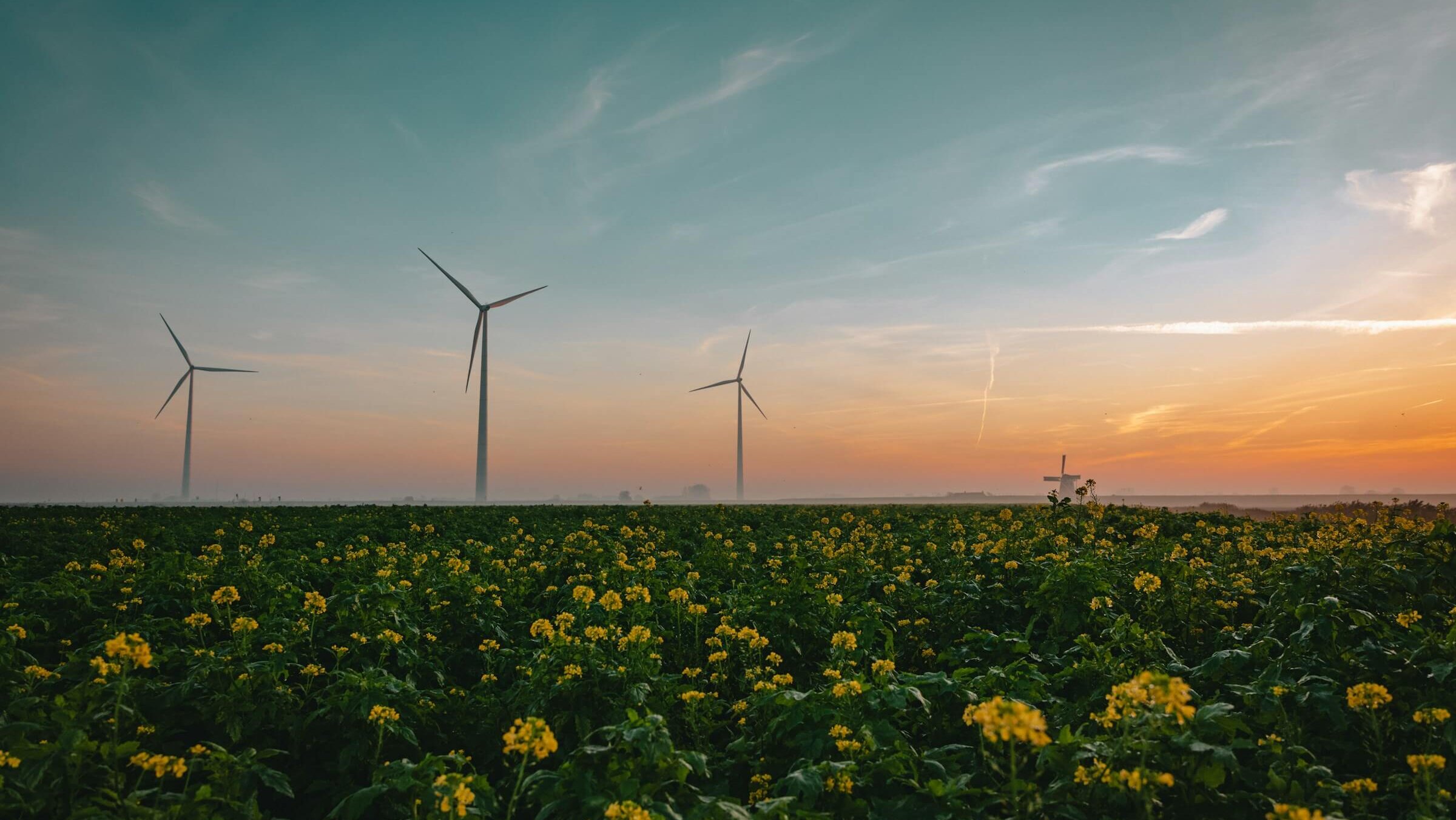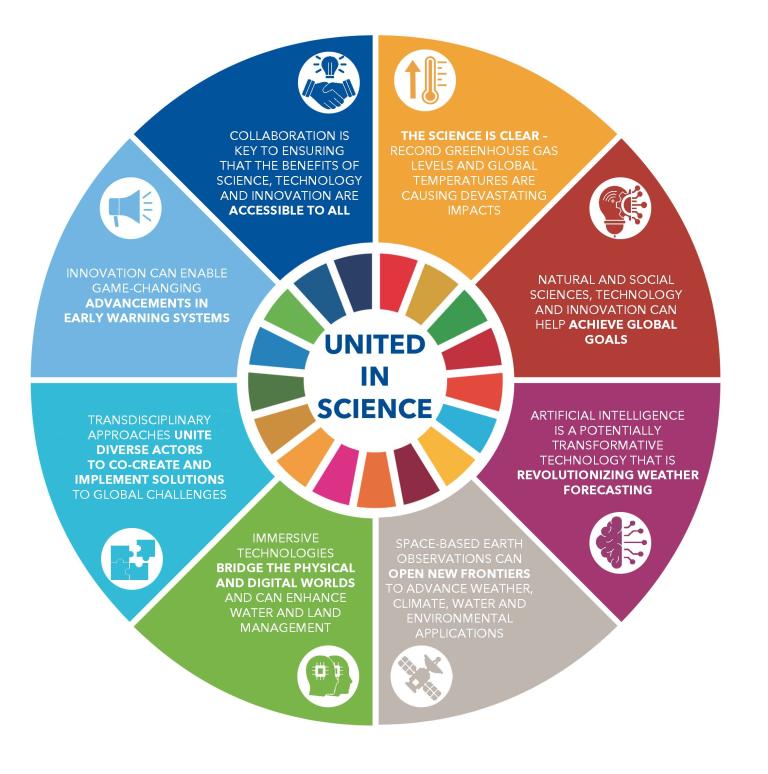
The science is clear. We are far off track from achieving vital climate goals. The impacts of climate change and hazardous weather are reversing development gains and threatening the well-being of people and the planet, according to a new multi-agency report coordinated by the World Meteorological Organization (WMO).
Greenhouse gas concentrations are at record levels, fuelling temperature increase into the future. The emissions gap between aspiration and reality remains high. Under current policies, there is a two thirds likelihood of global warming of 3 °C this century, says the United in Science report.
United in Science offers much-needed grounds for hope. It explores how advances in natural and social sciences, new technologies and innovation enhance our understanding of the Earth system and could be game changers for climate change adaptation, disaster risk reduction and sustainable development.
“We need urgent and ambitious action now to support sustainable development, climate action and disaster risk reduction. The decisions we make today could be the difference between a future breakdown or a breakthrough to a better world.
Artificial Intelligence and machine learning have emerged as potentially transformative technologies that are revolutionizing weather forecasting and can make it faster, cheaper and more accessible. Cutting-edge satellite technologies and virtual realities that bridge the physical and digital worlds are opening new frontiers in, for instance, land and water management.
However, science and technology alone are not enough to address global challenges such as climate change and sustainable development alone. In an increasingly complex world, we must embrace diverse knowledge, experiences and perspectives to co-create solutions together.”
WMO Secretary-General Celeste Saulo
The ISC’s Vice-President for Science and Society and contributor to the report, Motoko Kotani said:
“To address the pressing global challenges of today, we must embrace transdisciplinary collaboration, where diverse knowledge, perspectives, and experiences unite to co-create solutions that are both inclusive and sustainable. The international scientific community has an essential role to play in forging pathways that promote these diverse collaborations.”
Motoko Kotani, ISC Vice-President for Science and Society
The United Nations Summit of the Future provides a once-in-a-generation opportunity to revitalize and reboot our collective commitment to the global goals, says the report, which was compiled by a consortium of United Nations agencies, meteorological organizations and scientific and research bodies. It also embraces input from young people and early career scientists who are agents of change for the future.

United in Science 2024 – Key Messages
Human-caused climate change has resulted in widespread and rapid changes in the atmosphere, ocean, cryosphere and biosphere. The year 2023 was the warmest on record by a large margin, with widespread extreme weather. This trend continued in the first half of 2024.
Global greenhouse gas (GHG) emissions rose by 1.2% from 2021 to 2022, reaching 57.4 billion tons of carbon dioxide (CO2) equivalent. Globally averaged surface concentrations of CO2, methane (CH4) and nitrous oxide (N2O) also reached new highs.
When the Paris Agreement was adopted, greenhouse gas emissions were projected to increase by 16% by 2030 relative to 2015. Now, that projected increase is 3%, indicating progress has been made. Yet the emissions gap for 2030 remains high. To limit global warming to below 2 °C and 1.5 °C (above the pre-industrial era), global GHG emissions in 2030 must be reduced by 28% and 42%, respectively, from the levels projected from current policies.
With existing policies and Nationally Determined Contributions (which present national efforts to limit global warming to well below 2 °C), it is estimated that global warming will be kept to a maximum of 3 °C throughout the century. Only in the most optimistic scenario where all conditional NDCs and net-zero pledges are fully achieved, s global warming projected to be limited to 2 °C, with just a 14% chance of limiting global warming to 1.5 °C.
There is an 80% chance that the global mean near-surface temperature in at least one of the next five calendar years will exceed 1.5 °C above pre-industrial levels, and a 47% chance that the 2024-2028 five-year mean will exceed this threshold. The Paris Agreement threshold of 1.5 °C refers to long-term warming averaged over 20 years.
Urgent mitigation action is needed, as is climate adaptation.
However, one out of six countries still lack a national adaptation planning instrument, and a significant finance gap remains, with the flow of international public adaptation finance declining since 2020.
Thanks to rapid progress, Artificial Intelligence (AI) and Machine Learning (ML) can make skillful weather modelling faster, cheaper and more accessible to lower-income countries with limited computational capacities.
Traditionally, weather forecasting relies on physics-based models through a process known as numerical weather prediction. AI/ML models are trained on reanalysis and observational datasets, making weather forecasting faster and cheaper. Some evaluations have shown the potential of AI/ML for forecasting hazardous events such as tropical cyclones and longer-term predictions of El Niño and La Niña.
There are tremendous opportunities but also many challenges, particularly limited data quality and availability. Current AI/ML models do not include harder-to-predict variables related to the ocean, land, cryosphere and carbon cycle.
Strong global governance is needed to ensure AI/ML serves the global good. Enhanced transparency will be important for building trust and developing standards for responsible use.
Incredible advancements in recent decades in space-based Earth observations offer vast opportunities for the future.
High-resolution and high-frequency observations of the Earth system are crucial for effective weather forecasting, climate prediction and environmental monitoring.
By leveraging public–private partnerships, innovations in space-based Earth observations can be used to enhance weather, climate, water and related environmental applications.
However, big challenges limit the realization of the full potential of space-based Earth observations in support of global goals. Gaps remain in accurately measuring critical ocean, climate, aerosol and hydrological variables and in covering sparsely observed areas such as the cryosphere.
Additionally, data accessibility and standardization are a problem, particularly for developing countries.
International collaboration, comprehensive governance frameworks for integrated observing systems and innovative financing models are needed to support space-based Earth observation for weather, climate, water and related environmental applications.

WMO calendar competition 2024 – Pramod Kanakath (Indonesia)
Socioeconomic impacts and climate change are straining water and land resources, threatening food and water security. Immersive technologies such as digital twins, virtual reality and the metaverse can revolutionize integrated land and water management by offering interactive and data-driven solutions that bridge the physical and digital worlds. From simulating flood and drought events to predicting water flow and accumulation, as well as land degradation, they enhance decision-making and the engagement of diverse actors.
Digital twins are defined as a virtual representation designed to accurately reflect a physical object or system. The metaverse is an integrative ecosystem of virtual worlds that provides immersive experiences.
Challenges include limitations in data availability and quality. There is insufficient access to sustainable funding mechanisms, effective governance frameworks, and lack of public trust and understanding.
International cooperation, knowledge sharing and robust multilateral frameworks are crucial for adopting these innovative solutions.
Global challenges such as climate change, disaster risk reduction and sustainable development cannot be addressed by one form of knowledge alone – they require a transdisciplinary approach that unites actors across environmental, social and cultural contexts to co-create and implement solutions.
Conventional approaches often focus on understanding the dimensions of natural and social sciences, policy and society separately.
A transdisciplinary approach brings together diverse actors, such as scientists, policymakers, practitioners and civil society, including local and Indigenous communities, to co-create knowledge and develop solutions that are relevant to local contexts. It differs from a multidisciplinary approach, where experts from different disciplines work on the same issue separately.
For instance, engaging scientists, policymakers, practitioners and local and Indigenous communities from the outset enriches understanding of climate change impacts on the ground and offers a more complete perspective.
It also strengthens trust in institutions such as National Meteorological and Hydrological Services (NMHSs).
Multi-hazard early warning systems (MHEWS) are critical for protecting lives, livelihoods and the environment. Evidence shows that disaster-related mortality in countries with limited to moderate MHEWS coverage is nearly six times higher than those with substantial to comprehensive coverage.
Progress has been made and more than half of the world’s countries now report having MHEWS. But significant gaps remain.
The Early Warnings for All (EW4All) initiative aims to ensure everyone on Earth is protected from hazardous weather, water, and climate events through life-saving early warning systems by the end of 2027. The initiative underscored the importance of embracing natural and social sciences, technological advances and transdisciplinary approaches.
To scale up action on EW4All across stakeholders, innovation in science, technology and tools such as artificial intelligence (AI), multi-channel and digital communication platforms and citizen science – will be pivotal. By harnessing these advancements and ensuring they are backed by adequate resources, we can make game-changing advancements to ensure that Early Warnings for All becomes a reality for communities all over the world.
United in Science 2024 – Video Summary

Photo by Tim van der Kuip on Unsplash